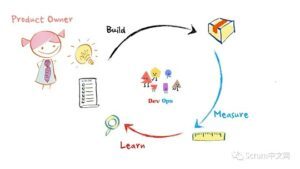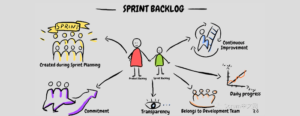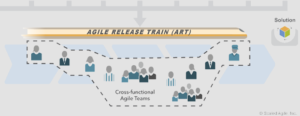The annual agile annual status report is released. This year’s report is based on an in-depth survey of more than 3,000 IT and business experts around the world, presenting us with industry trends, milestones, and challenges about agile technologies and practices.
After experiencing the baptism of the global epidemic, people’s working environment and collaboration methods have been greatly adjusted in the past year. Some models may be transitional, while others will evolve into new working models that have always been with us.
This report examines the state of agile development from the perspective of three key components of agile—people, process, and tools—to form a snapshot of the state for the year.
This article will explain the top ten points worth paying attention to in this year’s report.
01
89% of respondents believe that high-performing agile teams have:
People-centered values, a clear culture, tools and mandate from leadership.

02
More than half of the respondents said that implementing agile is to speed up time to market, and having better predictive capabilities and reducing risk is also a focus of attention.
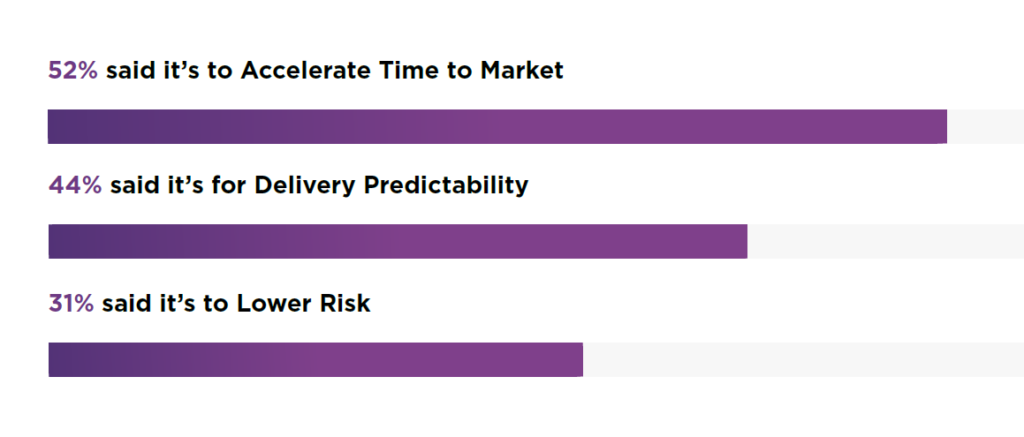
The purpose of implementing agile is not just for IT software development. 61% of respondents indicated that enterprise-wide digital transformation and IT software delivery are common goals.

The key indicator for measuring the success of an agile team is not just on-time delivery. 44% of respondents said that the success of an agile team is measured by whether they achieve business goals.

54% of respondents choose company goals as the basis for judging work priorities, followed by customer satisfaction at 43%.

03
Eighty percent of respondents said their organizations were using agile, and 50 percent were using a mix of agile and waterfall or iterative development methods.
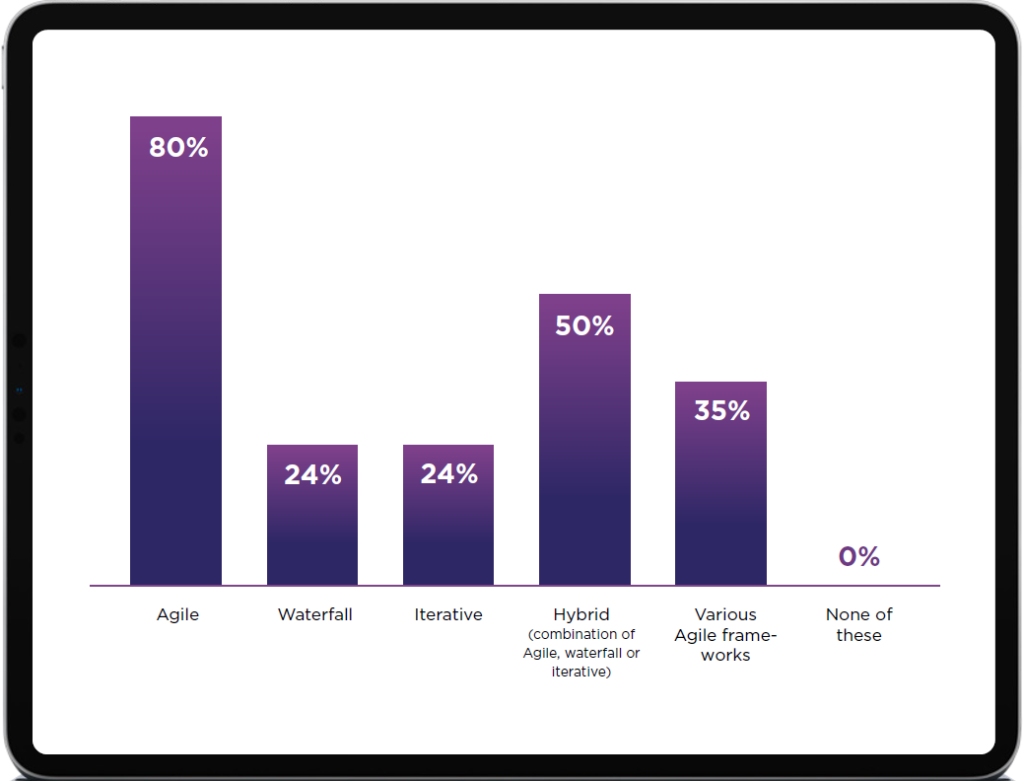
04
We mentioned at the beginning that high-performing agile teams have people-centered values, clear culture, tools, and leadership mandates, and the result of all this is-a better work environment, people collaborate, and work Visibility increases, This can better align with business needs.
Nearly 70 percent of respondents who are satisfied with their organization’s agile practices believe that it has led to better collaboration for them. 54% believe that being agile allows them to better align with business needs. This was followed by a better working environment (39%) and increased transparency in the product lifecycle (37%).

05
66% of respondents use Atlassian Jira as an agile management tool, a slight drop from previous years, and some emerging lightweight collaboration tools are more popular.
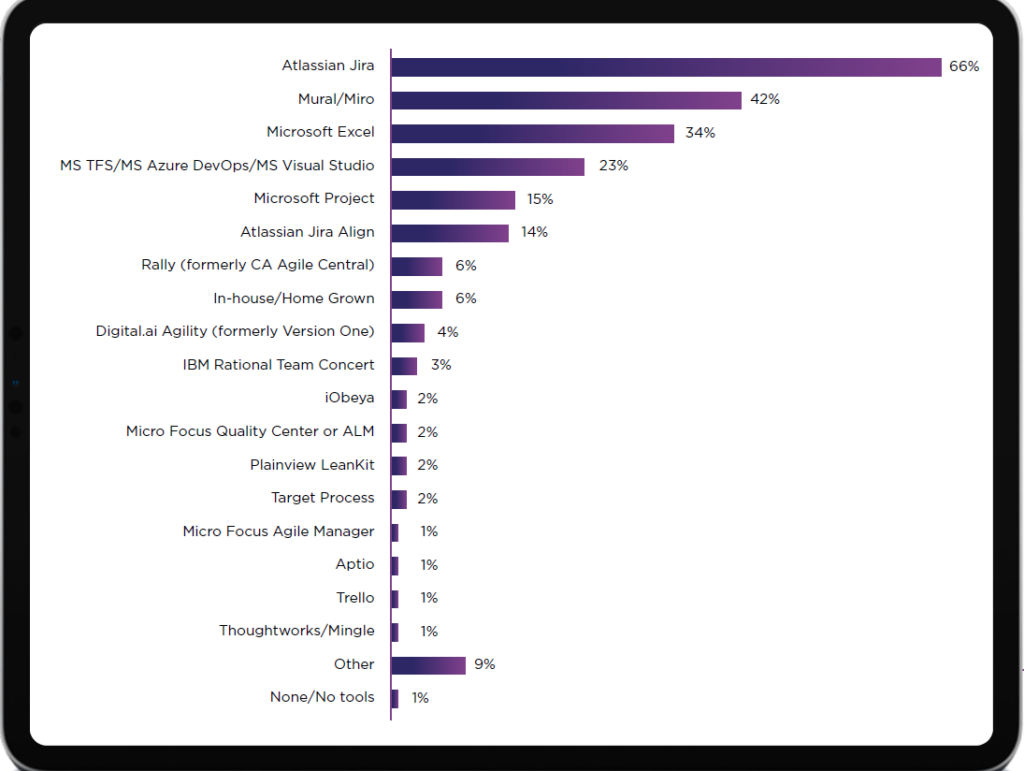
06
Scrum remains the most popular agile framework, increasing its share to 87% from 58% in 2020. The second-ranked Kanban method has also increased significantly from 7% in the past to 56%.
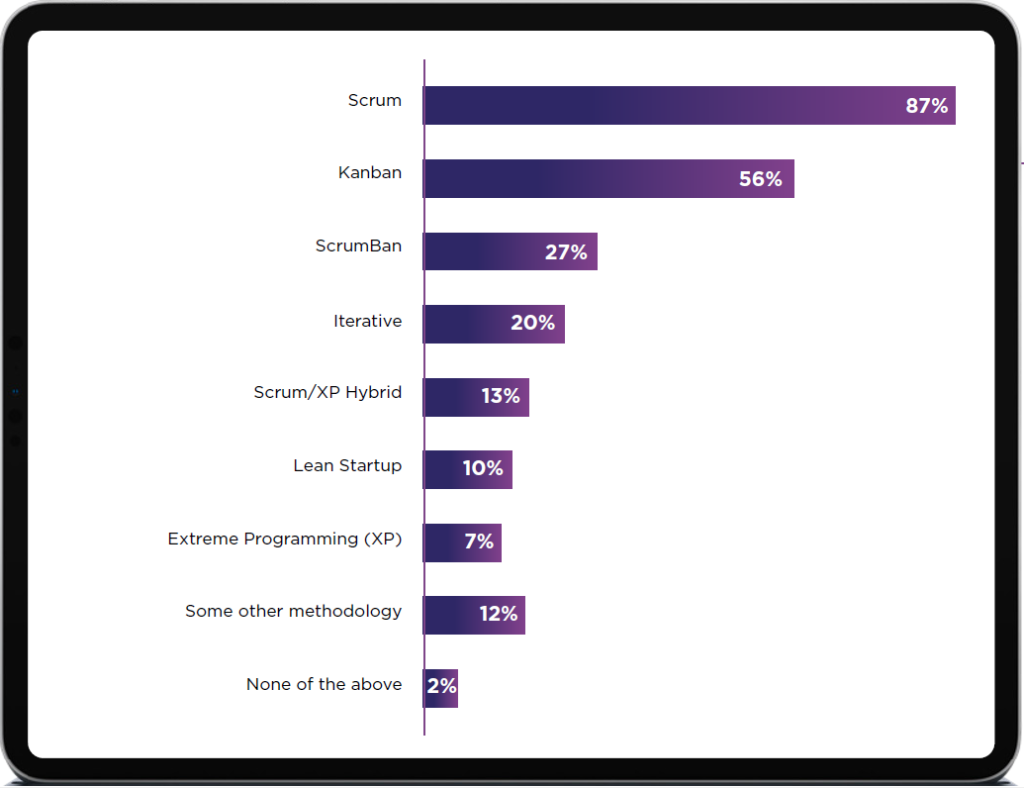
07
SAFe still leads the most popular enterprise-level agile framework, increasing from 37% in 2021 to 53% this year, accounting for more than half! 28% of respondents are using Scrum@Scale or Scrum of Scrums.
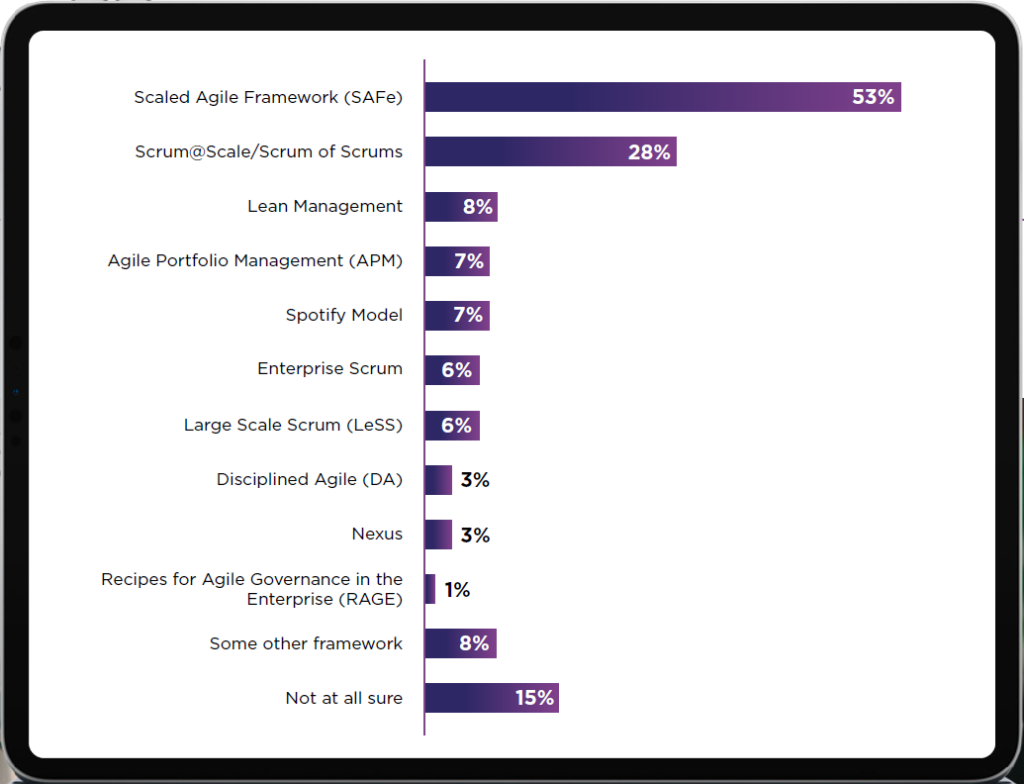
08
From a human perspective, what is the biggest challenge?
The other side of the Agile story is that it allows organizations to see challenges, and those who are better can see opportunities. According to the survey, culture, leadership, and consistency are the three key challenges for enterprises to successfully implement agile.

Key challenges at the organizational level:
Lack of leadership understanding or support (39%)
Lack of clear goals or priorities (31%)
Business teams do not understand what agile can bring (31%)
When specifically asked about barriers to adopting agile on the business side of the organization, the biggest concerns were insufficient leadership engagement (42%), lack of adequate agile knowledge (40%), general organizational resistance to change (40%), and Insufficient management support and/or sponsorship (39%).
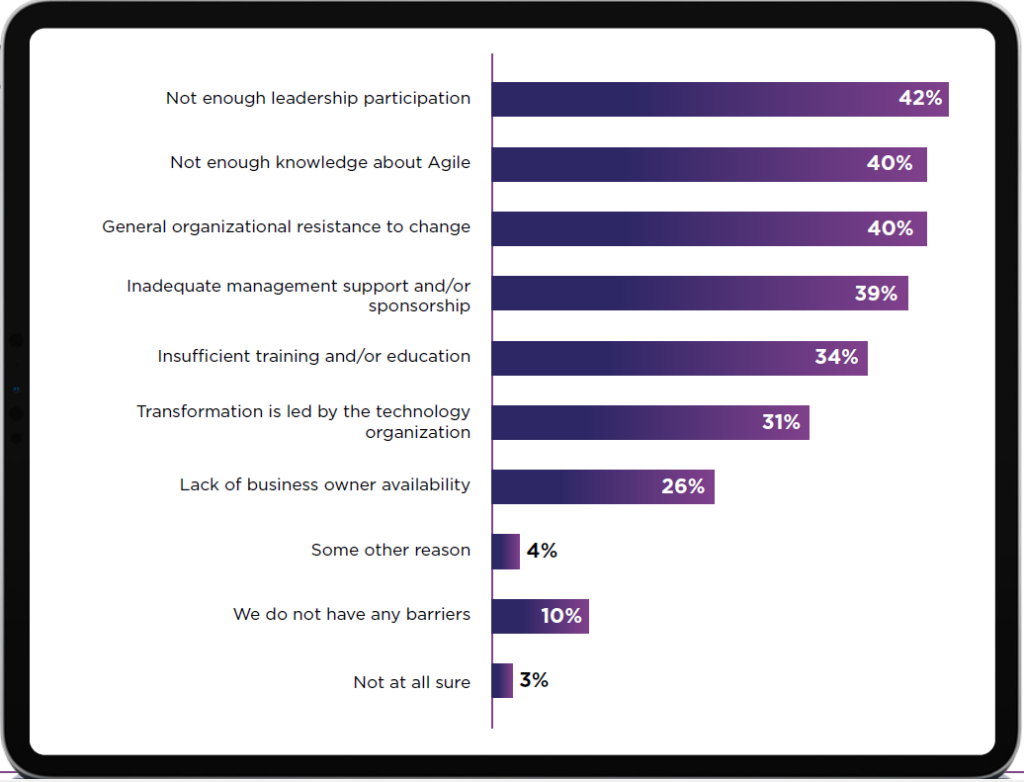
09
The main reasons for the failure of agile delivery:
Corporate Culture (41%)
Lack of management support (38%)
Inconsistent agile practices or processes (34%)
Ineffective management collaboration (26%)
Inability to consistently prioritize work (25%)
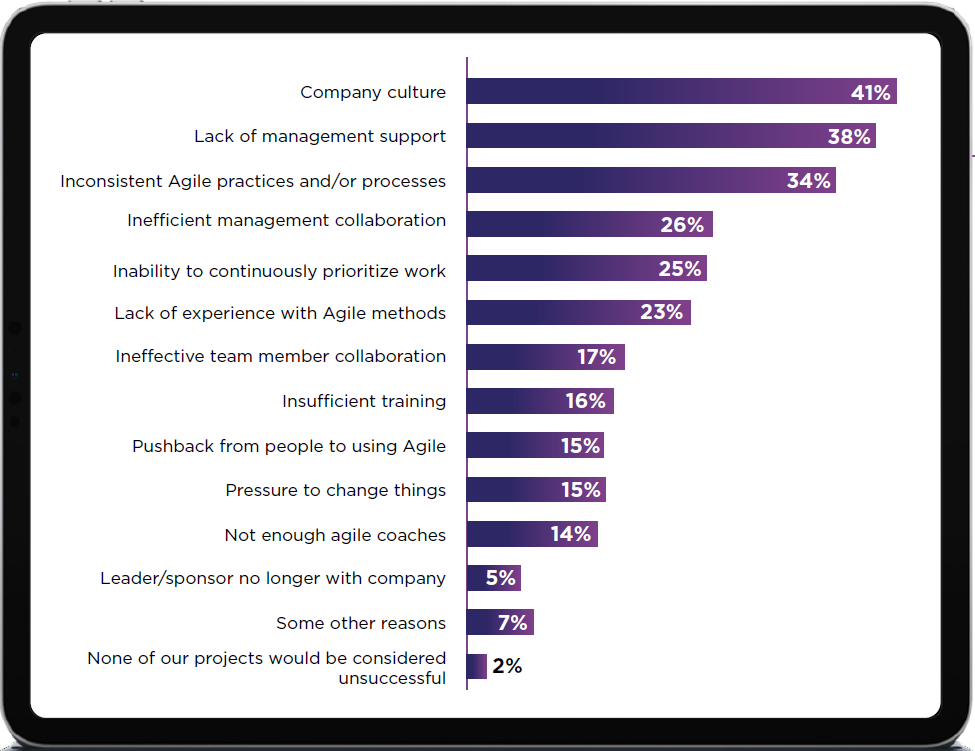
The top reasons cited by respondents who are dissatisfied with their organization’s agile practices are:
There are still many legacy systems in the company that require a hybrid approach (42%),
Agile practices are not consistently adopted across teams (40%)
Conflict with company culture (40%)
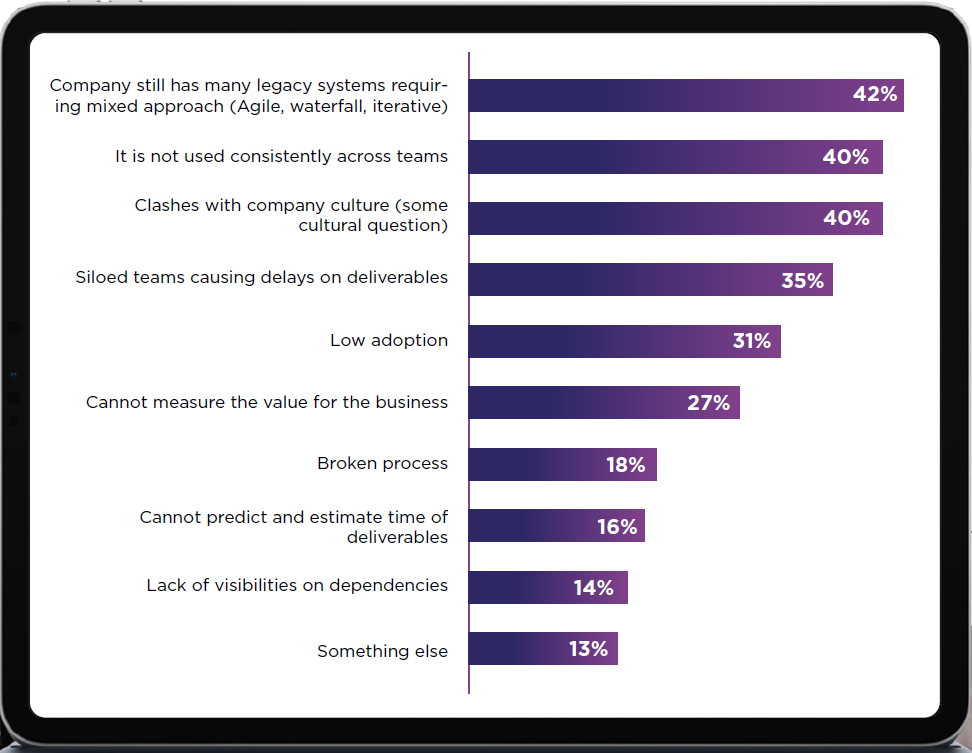
10
On the future trend:
Regarding collaboration, 51% of respondents said they work remotely most of the time.

Regarding enterprise-level agile, 37% of respondents indicated that they want to adopt enterprise-level agile, but the progress is slow.
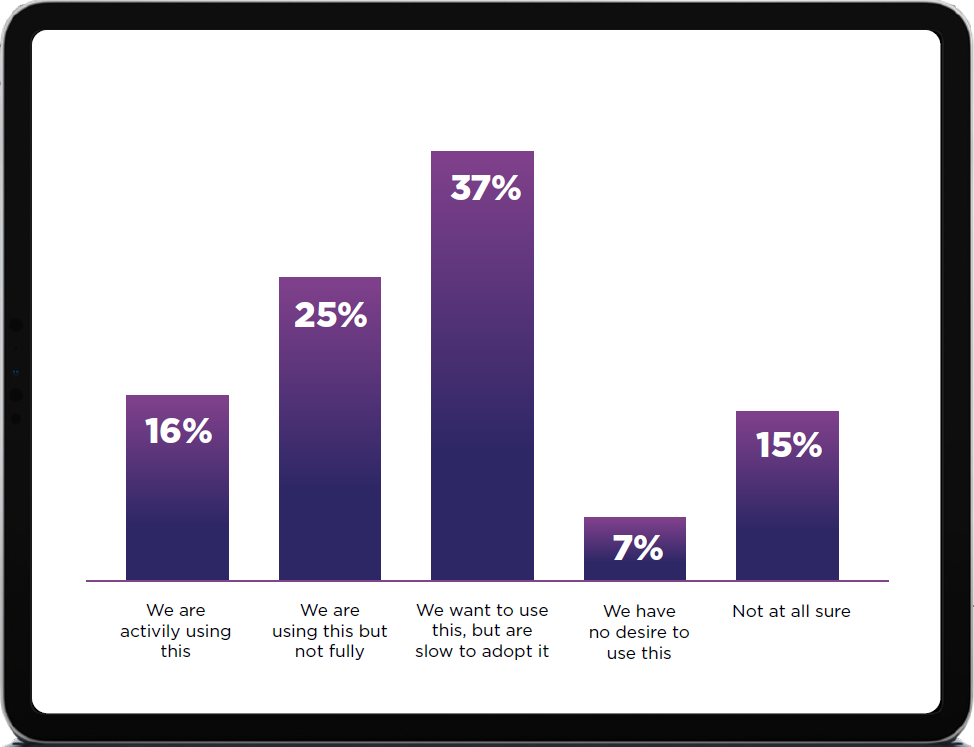
Regarding DevOps, nearly six out of ten respondents said that improving end-to-end visibility and traceability is the most valuable for improving DevOps practices.
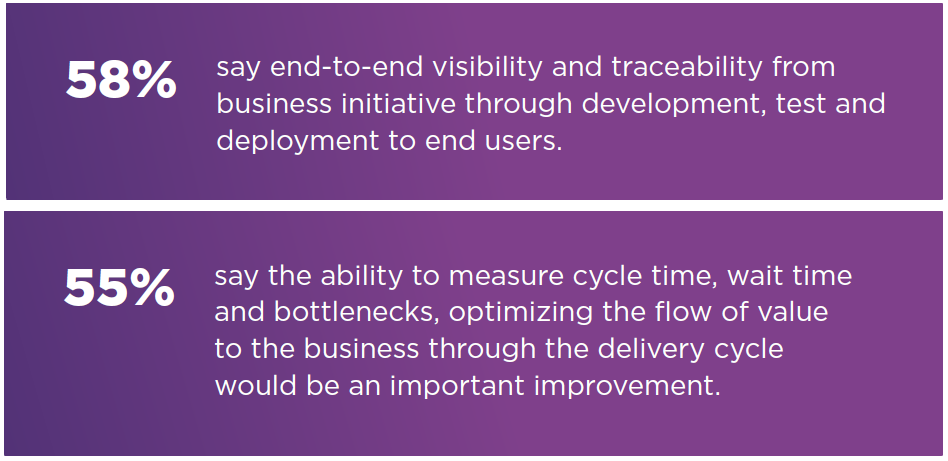
Reporting address: https://stateofagile.com/
Copyright Note: The pictures in this article are from “The 16th Annual State of Agile Report”
